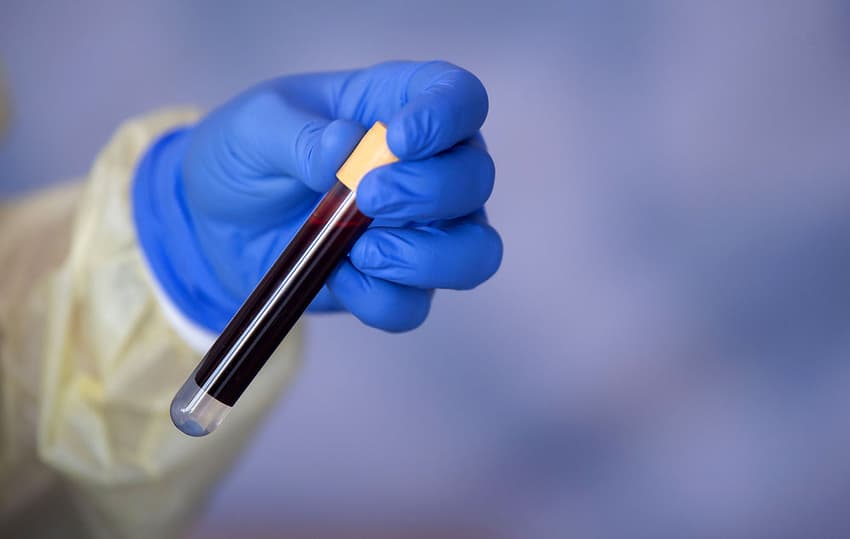Danish researchers find blood type has resistance to Covid-19 infection

People of blood type O are less likely to be infected with coronavirus, Danish researchers have found.
The results of the Danish study could impact who is first to be given a future vaccine in the country, broadcaster DR writes.
People with blood type O are less like to become infected with coronavirus than people of blood types A, B and AB, according to the Aarhus University and University of Southern Denmark study.
The Danish research project was based on data register information from 2.7 million people in the country whose blood type has been tested and recorded on the country’s health database.
Of the 2.7 million, 470,000 have been tested for Covid-19 with 7,400 having tested positive, according to DR’s report, which is based on data from Odense University Hospital.
Researchers found that the risk of being infected with coronavirus falls by 13 percent for people with blood type O.
In other words, if screening was carried out by blood group, the number of people required to find 100 positive Covid-19 cases among blood groups A, B and AB would only produce 87 cases in people with blood type O.
“These are very exciting results that show something takes place between the virus and our blood type. We ought to learn a lot more about it,” leading senior doctor on the project, Lars Østergaard, told DR.
Researchers will continue to study the reason why blood type O appears to be more protective against coronavirus, according to the report. Such knowledge could provide vital information in battling the disease.
“We don’t yet know the explanation, but we know from other infectious diseases that there may be a link between blood type and getting an infection,” Odense University Hospital professor Torben Barington, who led the study, told DR.
“It may also help to determine who should be vaccinated first if supplies of a vaccine are limited in the country,” he added.
Although some blood types appear to be more resistant, Barington stressed that anyone can be infected with coronavirus.
“The difference is so small that everyone can get coronavirus and therefore all of us should still follow health authorities’ advice and guidelines regardless of blood type,” he said.
READ ALSO: Denmark gives 120,000 influenza vaccinations in two weeks
Comments (2)
See Also
The results of the Danish study could impact who is first to be given a future vaccine in the country, broadcaster DR writes.
People with blood type O are less like to become infected with coronavirus than people of blood types A, B and AB, according to the Aarhus University and University of Southern Denmark study.
The Danish research project was based on data register information from 2.7 million people in the country whose blood type has been tested and recorded on the country’s health database.
Of the 2.7 million, 470,000 have been tested for Covid-19 with 7,400 having tested positive, according to DR’s report, which is based on data from Odense University Hospital.
Researchers found that the risk of being infected with coronavirus falls by 13 percent for people with blood type O.
In other words, if screening was carried out by blood group, the number of people required to find 100 positive Covid-19 cases among blood groups A, B and AB would only produce 87 cases in people with blood type O.
“These are very exciting results that show something takes place between the virus and our blood type. We ought to learn a lot more about it,” leading senior doctor on the project, Lars Østergaard, told DR.
Researchers will continue to study the reason why blood type O appears to be more protective against coronavirus, according to the report. Such knowledge could provide vital information in battling the disease.
“We don’t yet know the explanation, but we know from other infectious diseases that there may be a link between blood type and getting an infection,” Odense University Hospital professor Torben Barington, who led the study, told DR.
“It may also help to determine who should be vaccinated first if supplies of a vaccine are limited in the country,” he added.
Although some blood types appear to be more resistant, Barington stressed that anyone can be infected with coronavirus.
“The difference is so small that everyone can get coronavirus and therefore all of us should still follow health authorities’ advice and guidelines regardless of blood type,” he said.
READ ALSO: Denmark gives 120,000 influenza vaccinations in two weeks
Join the conversation in our comments section below. Share your own views and experience and if you have a question or suggestion for our journalists then email us at [email protected].
Please keep comments civil, constructive and on topic – and make sure to read our terms of use before getting involved.
Please log in here to leave a comment.